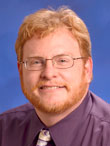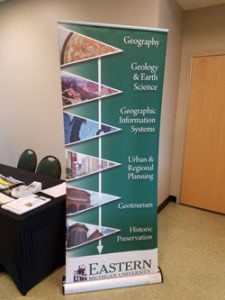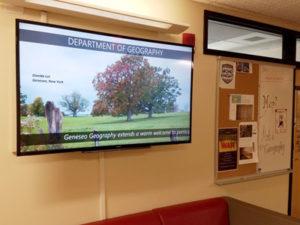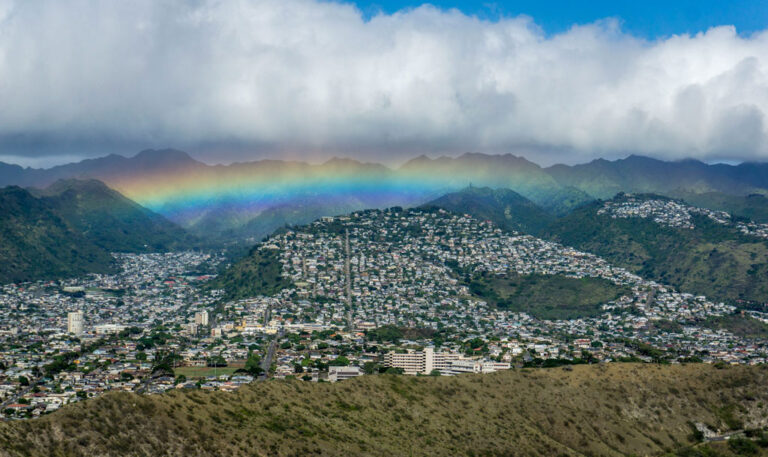Making Every Week About Geography Awareness and Advocacy

This column comes to you just a couple weeks before Geography Awareness Week’s 30th birthday. Founded by presidential proclamation in 1987, Geography Awareness Week (GeoWeek) is observed the third week of November each year.
This year’s observance, which takes place November 12-18, highlights the “geography of civil rights movements.” The theme of civil rights fills important voids in school curriculum and geographic education, but importantly it also makes a public statement that geographers care about and have something meaningful to say (and learn) about the struggle for equality and justice—particularly in these turbulent and violent times. During GeoWeek, all donations made to the AAG Enhancing Diversity Fund are to be matched, dollar for dollar, by the Association. If you have not already made plans to celebrate GeoWeek, please consider doing so.
The purpose of my remarks is to reflect on what we might want to accomplish through GeoWeek in terms of not just building an awareness of geography but also advocating for geography. I also wish to use Geography Awareness Week to take stock of the broader, year-around importance of disciplinary advocacy, the specific promotional strategies, successes, and struggles of geography programs and departments, and what AAG is doing (and can do further) to assist in providing resources and funding the development of innovations in public promotion of geography.
Not Just Awareness, But Also Advocacy
Geography Awareness Week’s initial focus was primarily limited to geography as a body of knowledge, the dismal state of geographic literacy among United States students, and the strategic role that a geographically educated citizen plays in national and world affairs. An assessment of the first GeoWeek in 1987 found that while it “generated much media attention and stimulated many celebratory activities, the image of geography as a serious academic discipline in higher education may not have been helped.” More recently, geography educators and proponents have broadened Awareness Week to promote the legitimacy and efficacy of geography as a profession and science.
These current efforts to enhance the efficacy of GeoWeek notwithstanding, there continues to be a need to refine how we think about this special November celebration. To begin with, advancing “awareness” is too passive of an idea to capture the kind of broader and deeper public investment in geography that needs to occur. A GeoWeek formally devoted to advocacy rather than simply awareness would elevate the importance of articulating the value of a geographic perspective to other disciplines and the larger society, which the AAG identifies as a critical goal for the 21st Century.
Without such advocacy, the sustainability, growth, and in some cases, survival of the field of geography is in jeopardy. Even as some geography programs expand, others prove to be vulnerable to reorganization if not elimination. Moreover, we have witnessed the steady dilution of geography curriculum at the K-12 level within many states. My recent discussions with departments and programs across a variety of regions and institutional settings point to the necessity of aggressively “making the case” for geography within higher education and other public arenas.
Building a Departmental Culture of Promotion
Key to creating impactful disciplinary advocacy is building a culture of promotion within and beyond GeoWeek. To learn more about the current state of this culture in geography departments and programs, I reached out to chairs and heads through an AAG-sponsored listserv. The response was superb and I cannot do justice to all of the submitted comments, but allow me to share some of the findings.
Many responding department leaders indicate regularly encountering and battling against academic and lay misunderstandings of geography. Especially irritating for some leaders is finding administrators and colleagues in their own colleges or universities who seem to have little interest in knowing about our discipline. For some programs, disciplinary advocacy is especially imperative given declining numbers of majors and drops in student enrollment. Understandably, department leaders define public promotion largely in terms of student recruitment and retention.

Department leaders provide extensive lists of techniques and tools they use to spread the word about geography. The quantity and quality of this advocacy naturally increases with GeoWeek, resulting in welcome tables, guest speakers, outreach into public schools and community colleges, geography bowls, and film screenings. Yet, most departments carry out recruitment and promotion every week by reaching out to the best students in geography classes to encourage them to consider a degree, redesigning their programs’ web sites and developing promotional materials (newsletters, brochures, banners, flyers, rack cards, swag, etc.), and hosting professionals who can communicate the career opportunities awaiting geography students.
Some department leaders emphasize the importance of reaching out to parents at job/major fairs and orientation sessions, supporting research that suggests that the “perceptions of parents are critical in their children’s decisions to pursue academic majors.” Many programs focus on ensuring that geography has a strong place in the university general education curriculum—although some leaders note that this does not guarantee student recruitment and a larger public respect for the field.
Responses from department leaders reveal a number of effective promotional practices that might be of interest to others wishing to enhance student recruitment and geography’s campus and community image.

- Update, renovate, and enhance departmental signage and spaces to make geography prominent to students and the visiting public. A program’s spaces can be important for highlighting faculty, staff, and student achievements and marketing what geographers do and contribute. For example, dotting the hallways of the Geography Department at SUNY-Geneseo are “Kudos to Geographers” displays and digital signage that continuously runs promotional images to passers-by.
- Involve students and geography student organizations in the recruitment process. Illinois State University’s geography club participates in community and campus promotional events, write notes to prospective students telling them why they became geographers, and attends general education classes to help faculty recruit majors. For this year’s GeoWeek, the Geography Club of Kutztown University is co-hosting a “Women in Science” panel discussion with prominent local female leaders and geography alumnae.
- Establish cooperative relationships with university offices that have direct contact with prospective students. Some responding departments host luncheons with their university’s advising office to keep them informed of geography courses and majors. The Department of Geosciences at Fort Hays State University maintains regular contact with those in the recruiting and admission offices.
- Actively cultivate a social media presence. Temple University’s Geography and Urban Studies Department uses Twitter, Facebook, and Instagram to communicate with students, and uses Facebook ads to promote open house events to prospective students. The program just created a promotional poster to send out to area high schools teaching AP Human Geography and AP Environmental Science.
- Assist and interact with community partners outside the university, whether they are local agencies, schools, non-profits, museums, or the media. Striving to create a culture of engagement as well as promotion, University of Missouri geographers use the Geographic Resources Center to provide spatial data, map making capacity, and educational workshops to public groups. Colleagues at University of Toronto are collaborating with a local school board to offer a workshop for high school teachers.
- Establish strong and productive relationships with college- and university-level communications and media relations offices. The Department of Geography at University of Colorado-Boulder, for example, recently worked with its college communications office to develop an alumni magazine article entitled “Not Your Junior High Geography.”

- Attract public attention and interest with experiential, hands-on learning to explore and understand geography. A number of department leaders report using Augmented Reality Sandboxes (ARS) as part of interactive promotional efforts. Geography programs at University of North Dakota and University of Tennessee are making effective use of ARS on and off campus.
- Conduct community building with alumni, who can be valuable in promotion and recruitment efforts. Clark University geographers organize their own “Geography Week” in the spring, which includes alumni speaking about their career in geography. This year, University of New Mexico hosted a “Geography of Beer” alumni event, marking the launch of a new course called the “World of Beer.” University of Delaware also hosts a Geography of Beer event for alumni along with a Geography of Pasta lecture aimed at the broader public.
Finally, effective disciplinary advocacy requires planning and the collective investment of a program. Colleagues at the University of Ottawa and the University of South Carolina have established committees for developing student recruitment strategies. Similarly, geography at Penn State created a committee of faculty to survey alumni, interview advisors from across the campus about their perceptions of geography, and consult with university public relations officials. Augustana College hired an outside consultant to assist with marketing the geography program to prospective students and administrators in light of looming budget cuts. This along with a revised curriculum brought a 68% increase in geography majors in the 2016-17 school year.
What AAG is Doing to Help

Department leaders cite cost, time, lack of faculty experience, and a scarcity of high quality promotional materials as chief obstacles to disciplinary promotion. In addressing the latter issue, the AAG has produced over the past several years a variety of outreach-related publications, brochures, handouts, slideshows, and multimedia tools. Recently, program chairs and heads have called on the Association to play an even greater role in the production of advocacy materials, particularly short promotional videos on what is geography and what can students do with a geography degree.
As a first response to this call from department leaders, Meridian Place staff members have begun inventorying and assessing a wide array of existing advocacy resources, with the hope of providing centralized access to those resources and identifying gaps in geography’s promotional profile. The result is the AAG Multimedia Resources for Geography Outreach and Engagement, which is a new compendium of resources (videos, podcasts, syllabi, documents, websites, etc.) for recruiting students, enhancing academic curricula, and raising geographic awareness among the public at large.
The compendium, which AAG will launch during the 2017 GeoWeek, is searchable by keywords, category (audience), format, and source to suit the user’s needs. Promotional videos created by geography departments and academic centers to recruit students are a chief component of this new compendium. I invite department leaders to share videos and other multimedia resources to help grow the collection as well as provide feedback to the Association on how to improve the compendium. Send resources and feedback to David Coronado at dcoronado [at] aag [dot] org.
I believe that AAG can be a strong supporter of disciplinary advocacy in other ways. At the fall 2017 AAG Council meeting, I will propose and begin working to establish a new grant program for enhancing the public identity of the work of geographers. It will assist in generating and publicizing innovative media, techniques, and program ideas for strongly communicating the everyday, policy, political, and scientific relevance of geography in our modern world. “Innovations in the Public Promotion of Geography” would be a competitive, peer reviewed program that supports newly created tools or approaches with a strong likelihood of being successful and replicated by other geographers. Feel free to share your opinion of this idea with your national and regional councilors.
I am interested in knowing how AAG members plan to celebrate GeoWeek and the broader geography promotional and advocacy strategies taking place within departments, programs, and workplaces. Please share your thoughts and experiences by emailing me at dalderma [at] utk [dot] edu or sharing on Twitter #PresidentAAG.
— Derek Alderman @MLKStreet
Professor Geography, University of Tennessee
President, American Association of Geographers
DOI: 10.14433/2017.0017

